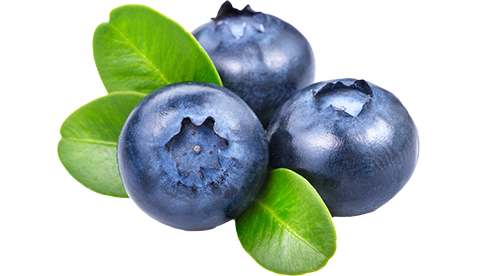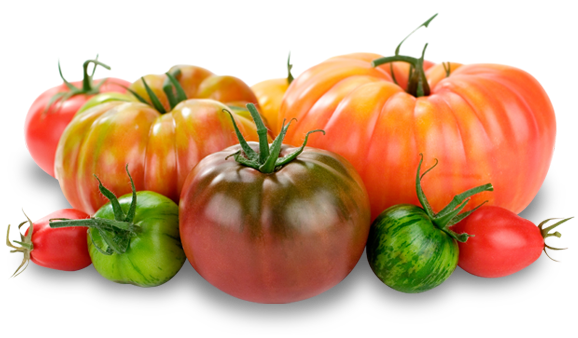To me, there’s nothing better than eating watermelon on a hot summer day. The juice that drips down your chin is sublime, and for a moment you can almost forget any woes of the day. That’s probably why I love fruit so much: Their sweetness comforts me without making me feel guilty (can’t say the same after eating ice cream). In summer, fruit is at their peak, and there’s an overwhelming abundance of it that needs savoring.
My first post in this series was about spring herbs. If you’d like to see the first article in this series, I got you covered. My second post was all about spring vegetables, my third post was about spring fruits, my fourth post was about summer herbs, and my fifth post was about summer vegetables. If you enjoy this series, be sure to let me know (maybe I’ll do more for different seasons). Until then, I wish you a happy container garden filled with beautiful plants!
-
Blueberry seeds (preferably organic – Dwarf versions of this plant are best for indoor container gardens)
-
8 inch (or more) clay pot with drainage hole
-
Organic potting soil (I got mine at Home Depot)
-
A dish, saucer, or tray to place under pot (to capture any water leaked out of drainage hole)
-
Sunny window (South, west, or east facing windows are best)
-
Fill your 8 inch clay pot with your organic potting soil.
-
Now add some seeds to your soil. I recommend no more than 1 seed per pot.
-
Now cover the seeds with some more soil, about 1/2 inch deep (in other words, don’t bury them). Transfer the pot over to your chosen windowsill. Over the next few days, water by gently misting the soil, instead of with a watering can. Personally, I don’t even use a watering can: I use an upcycled glass bottle. It’s easier to water plants this way because there aren’t several watering holes (just one) so I have better control over my watering.
-
Examine the soil after a few days, and look for sprouted seeds. If two sprouts appear to be growing from the same seed, cut away the weakest of the two with cuticle scissors. This will help the plant focus its energy for optimal growth.
-
Watering: Once you have a sprout growing, you can use your watering can (or for me, my upcycled glass bottle – which I painted and made look all pretty by the way). Make sure you water around the sprout, not on it (sprouts are very fragile and you don’t want them bending in awkward ways!). Water ONLY when the soil at the top is dry to the touch. Blueberries really love water, so you might want to consider watering daily.
-
Sunlight: Blueberries need at least 6 hours of sunlight. Essentially, that means don’t even bother moving them away from the windowsill. They love sun and heat!
-
Harvesting: To harvest blueberries, simply pick them off the miniature bush once it’s mature. This will also encourage new growth.
-
Tomato seeds (preferably organic and heirloom – cherry tomatoes are best for indoor container gardening)
-
12 inch clay pot with drainage hole
-
Organic potting soil (I got mine at Home Depot)
-
A dish, saucer, or tray to place under pot (to capture any water leaked out of drainage hole)
-
A tomato stake or cage
-
Sunny window (South, west, or east facing windows are best)
-
Fill your 12 inch clay pot with your organic potting soil
-
Now add some seeds to your soil. I recommend no more than 1 seed per pot, as tomatoes take up a lot of room.
-
Now cover the seeds with some more soil, about 1/4 inches deep (in other words, don’t bury them). Transfer the pot over to your chosen windowsill. Over the next few days, water by gently misting the soil, instead of with a watering can.
-
When the tomato seedling has sprouted and reached four inches tall, tie a stake to it or a tomato cage to it. This will help it from slumping over your clay pot. There are certain tomato varieties that may not require staking though, such as the Patio tomato, Pixie tomato, Tiny Tim tomato, Toy Boy tomato, Micro Tom tomato, Floragold tomato, Early Girl tomato, Stakeless tomato, and the Big Boy tomato. Look into these varities to see which is best for you if you’d prefer not to bother with staking.
-
Watering: Once you see a sprout, now you can use your watering can (or for me, my upcycled glass bottle). Make sure you water around the sprout, not on it (sprouts are very fragile and you don’t want them bending in awkward ways!). Water ONLY when the soil at the top is dry to the touch.
-
Sunlight: Tomatoes need at least 6 hours of sunlight. Essentially, that means don’t even bother moving them away from the windowsill. If you have a windowsill that doesn’t get that amount of sunlight, consider investing in grow lights.
-
Harvesting: To harvest tomatoes, just pick off the ripest looking ones when the plant is mature.
-
Raspberry seeds (preferably organic)
-
24 inch clay pot with a very good drainage hole (not ideal for those with an extremely small windowsill for gardening)
-
Organic potting soil (I got mine at Home Depot)
-
A dish, saucer, or tray to place under pot (to capture any water leaked out of drainage hole)
-
Sunny window (South, west, or east facing windows are best)
-
Fill your 24 inch clay pot with your organic potting soil.
-
Now add some seeds to your soil. I would recommend no more than 1 or 2 seeds per pot. You could always thin the one that isn’t growing good or big enough.
-
Now cover the seeds with some more soil, about 1/2 inch deep (in other words, don’t bury them). Transfer the pot over to your chosen windowsill. Over the next few days, water by gently misting the soil, instead of with a watering can. Personally, I don’t even use a watering can: I use an upcycled glass bottle. It’s easier to water plants this way because there aren’t several watering holes (just one) so I have better control over my watering.
-
Watering: Once you start to see sprouts, now you can use your watering can (or for me, my upcycled glass bottle). Make sure you water around the sprouts, not on them (sprouts are very fragile and you don’t want them bending in awkward ways!). Water ONLY when the soil at the top is dry to the touch. Make sure the drainage in the pot is good, as thyme doesn’t take well to soggy roots. Never let it sit in water that’s been collected in the saucer, either.
-
Sunlight: Radishes needs at least 6 hours of sunlight. Essentially, that means don’t even bother moving them away from the windowsill. If you have a windowsill that doesn’t get that amount of sunlight, consider investing in grow lights.
-
Harvesting: To harvest raspberries, just pick them off the vine as soon as you see ripe ones on a mature plant.
___________________________________________
This series has ended, but please feel free to leave your feedback in the comment section below. As always, thanks for joining me!
_____________________________
Become an official Greenifier
Want more tips on how to greenify your life? Sign up for my newsletter! Once a month, I’ll deliver green living tips, beauty hacks, and blog round ups straight to your email. Not to mention you will be the first to know of any exciting projects, collaborations, and partnerships in the works! Also, you’ll gain access to exclusive freebies found nowhere else on my blog. What are you waiting for?







I have read all yor articles about fruits and vegetables and iam agree that we should grow fruits and vegetables as they play an important rule in the development of our body.
A space filled with sand would represent an ocean. By that we assume that garden masters were looking to achieve a minimalistic approach, best represented by the phrase "less is more".Electric Tiller Review
Path lights are remarkably popular and used in gardens worldwide. Solar lights for gardens that are path lights will come with a stake that enters into the group. They are available in a wide variety of choices in style and colour, there are also those than hold on a stake. visit website
Taking great care of your garden shouldn't be left just on the characteristic conditions, for example, sun, rain and soil minerals. howdoesyourgardenmow.com/chicago-electric-chainsaw/
A home lawn which is sound before Summer arrives is a much better answer for accomplish a solid Summer lawn.sitemap how does your garden mow
hi
Specialized gardens rarely sport vegetables like corn, tomatoes, potatoes, peas, or beans. They, in agreement with their type, focus more on the special or more rare type of flora.Thank Your Garden
The article looks magnificent, but it would be beneficial if you can share more about the suchlike subjects in the future. Keep posting. Bug Zapper for out door and indoor
I wrote about a similar issue, I give you the link to my site.
cocacrop.com/category/hydroponics/
It's not often that I read such good posts.
Infos 2 Zeszyt ćwiczeń (do wersji wieloletniej)
Kindly fill me in as to whether you're searching for an article essayist for your site. You have some truly extraordinary posts and I feel I would be a decent resource. On the off chance that you ever need to take a percentage of the heap off, I'd totally love to compose some material for your web journal in return for a connection back to mine. It would be ideal if you send me an email if intrigued. Much obliged to you! growtallerbook.org
All the blog writings are demonstration of what we call, Brilliant.
Artificial foliage
One more advantage of having your vegetable garden the additional learning of realizing what is in your garden. By picking against the utilization pesticides on your garden individuals can have a natural garden without the stress of added substances.Outdoor Seeds
All the blog writings are demonstration of what we call, Brilliant.
cocacrop.com
I will always remember this blog as a master piece.
cocacrop.com/best-string-trimmer-line/
What is so great about this blog is its uniqueness.
verellenhc.com/outdoors/chainsaw/best-rated-reviews
Immediately drawn by writer’s exclusive way of writing.
cocacrop.com/
One more advantage of having your vegetable garden the additional learning of realizing what is in your garden. By picking against the utilization pesticides on your garden individuals can have a natural garden without the stress of added substances.vladimir vrbaski republika
Thank you very much for the sharing! COOL..
southend fencing
I might suggest solely beneficial in addition to trusted facts, and so find it: Best Electric egg boiler online in India
Cash For Cars Melbourne
This is very nice one and gives in-depth information.
Fantastic is the most proper word to portray this blog.
HobbyPlants